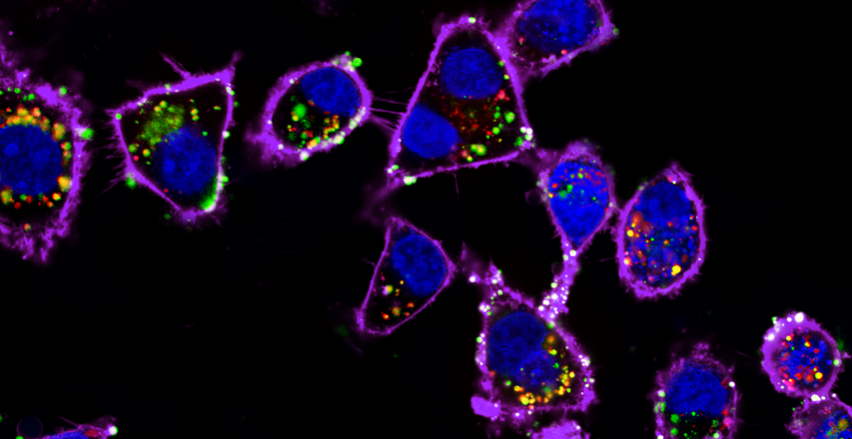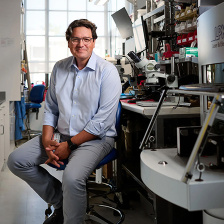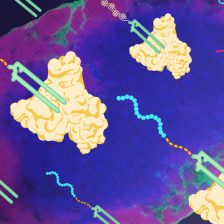
Nanoparticles (green and yellow) from the Hammond Lab have been steered to ovarian cancer cells (blue and purple) by the outermost coating of their layer-by-layer construction. Smart drug-delivery vehicles like these may help minimize harmful side effects to patients. Credit: Santiago Correa, Erik Dreaden.
A nanometer is one billionth of a meter, a scale so tiny it’s hard to imagine—a strand of your hair is about 100,000 nanometers wide. But the nanoscale is also where we are making progress against cancer.
That’s because biology happens at the nanoscale—a strand of your DNA is about 2.5 nanometers in diameter. Fundamentally, a cell is an intricate factory that operates at the nanoscale and manufactures a wide range of molecules via many complex biochemical pathways. To make precise interventions in these nanoscale machines, we need nanoscale tools that enable the precise control of how, where, and when drugs are delivered to maximize their impact on cancer cells, while minimizing the impact on healthy cells—and adverse effects on patients.
Collaborating around the nexus of the Marble Center for Cancer Nanomedicine, we devise “smart” nanoscale cancer medicines that make the most of emerging and existing technologies. Our researchers develop nanotechnologies that can home in on cancer cells through the molecular structures they uniquely express, or place a payload exactly in the right place in or on a cell for a drug to do its work. Other nanoscale tools package combination therapies together to be released at specific times and in a specific order, or release drugs at a controlled rate over a longer period of time. Nanocarriers can also package delicate or highly toxic cargoes until they reach their targets. For example, genetic materials like mRNA or siRNA, are quickly broken down by the body if left unprotected, but are essential for next generation cancer medicines.



